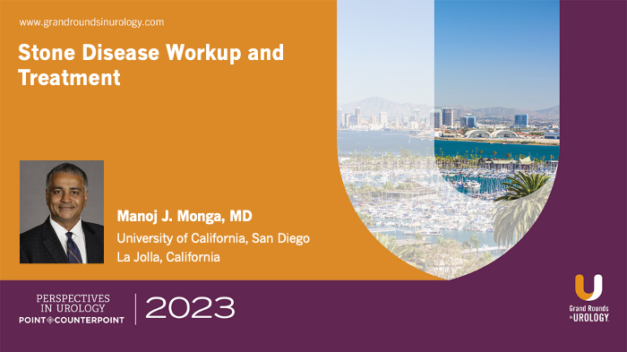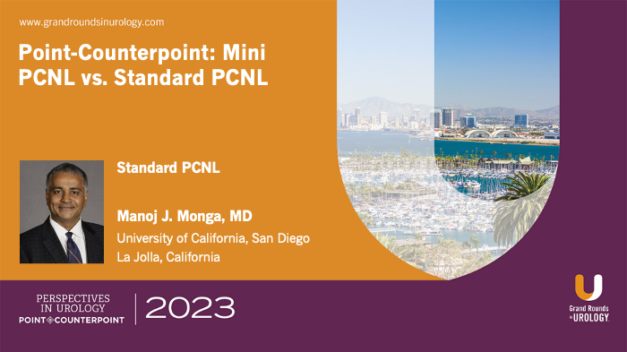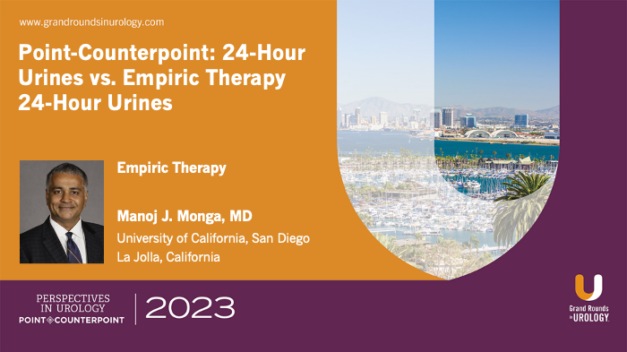Stone Disease Workup and Treatment
Manoj J. Monga, MD, FACS, answers patients’ commonly asked questions about food, drink, and supplement choices for kidney stone prevention. He first acknowledges the overwhelming role of genetics in calcium oxalate stone formation. Dr. Monga then compares sodas made with phosphoric acid versus sodas made with citric acid, explaining the effects of each on stone formation, explaining that phosphoric acid is detrimental to the kidneys. He continues by analyzing the beneficial alkali content of coconut water and the impact of black and green teas on kidney stone formation.
Dr. Monga then addresses the role of dietary citrates, emphasizing that foods rich in citric acid are good for the kidneys, and foods rich in potassium citrate are bad for the kidneys. He also explains that a higher calcium and lower salt intake may help stone prevention. Dr. Monga considers supplements as well, noting that fish oil can help decrease urinary calcium while increasing urinary citrate.
Dr. Monga continues by evaluating several oxalate-rich foods, all of which raise the risk of stone formation. He completes his discussion with a comparison of milk chocolate versus dark chocolate, emphasizing that milk chocolate is better for reducing the risk of stone formation.
Read More


